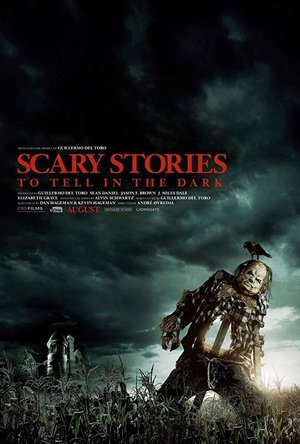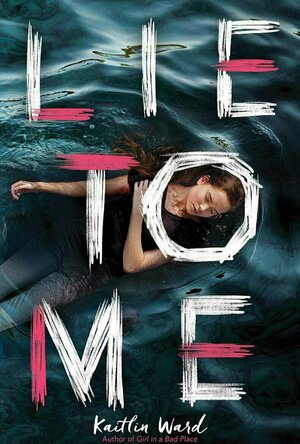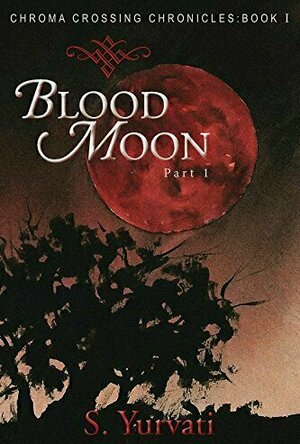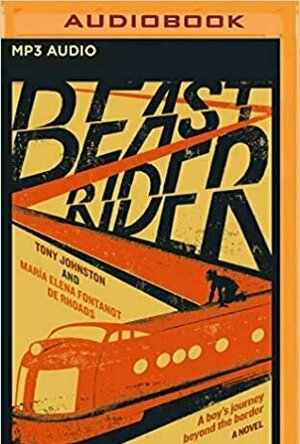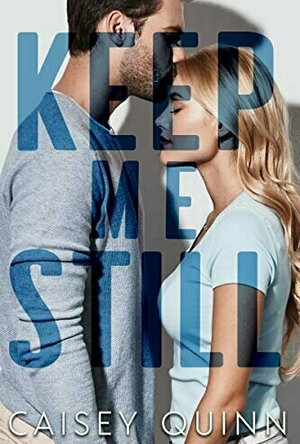Search
Search results
Gareth von Kallenbach (980 KP) rated Scary Stories to Tell in the Dark (2019) in Movies
Aug 9, 2019
I was introduced to Scary Stories to Tell in the Dark (the amazing book series written by Alvin Schwartz back in 1981) in my Junior High history class. An odd place for sure to listen to this amazing collection of stories, and yet it displayed how these stories are impactful even if you aren’t reading them around a campfire in the middle of the woods. Schwartz had written two additional sequels to his stories in 1984 and 1991 and the incredibly creepy illustrations (by Stephen Gammell) helped to complete a collection of books that are at home in anyone’s collection both young and old.
The 80’s was a decade obsessed with the occult and works of fiction that parents thought were written to corrupt the minds of the youth of the age. Before video games were blamed for all the evil in the world there was Heavy Metal music, the fantastical role-playing games such as Dungeons and Dragons and books such as these that parents rallied around and attempted to ban from schools and after school functions. Looking back now at the hysteria that this caused is almost laughable, but for those of us growing up in that time it was a very real threat to the imaginations of youth around the globe. Outside of this brief history lesson however, I wondered how the books would translate into a movie.
Our story begins on Halloween night, the year is 1968 and the Vietnam War and the upcoming presidential elections are on everyone’s mind. Stella (Zoe Colletti) and her nerd friends Chuck (Austin Zajur) and Auggie (Gabriel Rush) decide that this will be the year that they get revenge on the local bully Tommy (Austin Abrams) for all his years of stealing candy from them on Halloween. After things go predictably wrong, the young group of kids are pursued to a drive-in theater where they seek refuge in a car that is owned by another out-of-town youngster named Ramon (Michael Garza). As thanks for “saving” them from a certain beating, Stella and the group decide to take Ramon to a real-life haunted house. A place where a young Sarah Bellows would tell stories to frighten children only for them to end up dead days later. While exploring the house the young group discover the hidden room of young Sarah Bellows and come across her book of “Scary Stories”. Unable to contain her own curiosity, Stella takes the book home with her and watches as the words on the pages turn into living nightmares of their own darkest fears.
Produced by Guillermo del Toro, Patrick Melton and Marcus Dunstan, Scary Stories takes a handful of fan favorites and weaves them into a “scary” story of their very own. Instead of simply being a collection of haunting tales, each one serves a purpose, whether it’s the “Red Dot” or “Harold”, each one is used to drive the story even further along. While at first, I was hoping that it would be a collection of short stories featuring these timeless classics, the way in which each individual story progresses the plot leads to a far more interesting experience overall.
Those looking for a movie filled with frightening tales that will have you reaching for the closest shoulder (whether you know who it belongs to or not) will be in for a bit of disappointment. That’s not to take away from the incredible amount of vision needed to bring these classic stories to life, but it takes on a far more contemporary feel, then the dark stories and supernatural visions of the books that came before it. The film comes away feeling more like Goosebumps and less like Freakshow which makes sense given its PG-13 rating and its obvious pre-teen to teen demographic. The movie is still fun however, particularly for those who fondly remember the stories from their youth and is one that will proudly sit beside the likes of Hocus Pocus when it comes to network television down the road as part of its likely Halloween line-up.
4 out of 5 stars
http://sknr.net/2019/08/08/scary-stories-to-tell-in-the-dark/
The 80’s was a decade obsessed with the occult and works of fiction that parents thought were written to corrupt the minds of the youth of the age. Before video games were blamed for all the evil in the world there was Heavy Metal music, the fantastical role-playing games such as Dungeons and Dragons and books such as these that parents rallied around and attempted to ban from schools and after school functions. Looking back now at the hysteria that this caused is almost laughable, but for those of us growing up in that time it was a very real threat to the imaginations of youth around the globe. Outside of this brief history lesson however, I wondered how the books would translate into a movie.
Our story begins on Halloween night, the year is 1968 and the Vietnam War and the upcoming presidential elections are on everyone’s mind. Stella (Zoe Colletti) and her nerd friends Chuck (Austin Zajur) and Auggie (Gabriel Rush) decide that this will be the year that they get revenge on the local bully Tommy (Austin Abrams) for all his years of stealing candy from them on Halloween. After things go predictably wrong, the young group of kids are pursued to a drive-in theater where they seek refuge in a car that is owned by another out-of-town youngster named Ramon (Michael Garza). As thanks for “saving” them from a certain beating, Stella and the group decide to take Ramon to a real-life haunted house. A place where a young Sarah Bellows would tell stories to frighten children only for them to end up dead days later. While exploring the house the young group discover the hidden room of young Sarah Bellows and come across her book of “Scary Stories”. Unable to contain her own curiosity, Stella takes the book home with her and watches as the words on the pages turn into living nightmares of their own darkest fears.
Produced by Guillermo del Toro, Patrick Melton and Marcus Dunstan, Scary Stories takes a handful of fan favorites and weaves them into a “scary” story of their very own. Instead of simply being a collection of haunting tales, each one serves a purpose, whether it’s the “Red Dot” or “Harold”, each one is used to drive the story even further along. While at first, I was hoping that it would be a collection of short stories featuring these timeless classics, the way in which each individual story progresses the plot leads to a far more interesting experience overall.
Those looking for a movie filled with frightening tales that will have you reaching for the closest shoulder (whether you know who it belongs to or not) will be in for a bit of disappointment. That’s not to take away from the incredible amount of vision needed to bring these classic stories to life, but it takes on a far more contemporary feel, then the dark stories and supernatural visions of the books that came before it. The film comes away feeling more like Goosebumps and less like Freakshow which makes sense given its PG-13 rating and its obvious pre-teen to teen demographic. The movie is still fun however, particularly for those who fondly remember the stories from their youth and is one that will proudly sit beside the likes of Hocus Pocus when it comes to network television down the road as part of its likely Halloween line-up.
4 out of 5 stars
http://sknr.net/2019/08/08/scary-stories-to-tell-in-the-dark/
Bad writing (1 more)
Mostly romance
Drowning is one of the top fears in the world, and it's also one of the top ways to cover up a murder. In Lie to Me, Ward's fourth YA novel, she uses drowning as the basis of the story. Yet, this book fell very short in the thriller/mystery genre: Ward gives away too many hints at the beginning of the book, that most readers will have the murderer figured out by chapter 7; she also focuses too much on romance, something that should have caused this story to be filed under a different category other than mystery/thriller. But luckily she didn't bring in a wide circle of characters to cause confusion, using only one view point from the main character of Lie to Me: Amelia- - - a teen girl who believes she was pushed down a ravine to be left for dead in the raging water below.
Besides her 'accident,' Amelia leads a normal life with her mother, father and brother, Hunter - - - she also has a small group of friends. After her 'fall,' a body of a teen girl from the same town is found in a nearby river, but the town gossips, and makes it seem that this girl committed suicide, leaving Amelia worried that her family would think the same thing about her. Depression is something that Amelia's family has had to deal with before, but the talk of depression is candid and not very enlightening; her brother, Hunter, who is in therapy for such doesn't even talk about it, instead he's usually seen playing soccer or Fortnite, this seems to be a broad attempt to bring mental health into the story,but without going into that subject, it failed as a story line. Yet, one of the main causes of depression today is social media, which we find Amelia stalking one of her best friends/love interest on- - -if Ward was trying to reach the YA community about depression, she went the wrong way about it.
Another mistake that Ward made was when Amelia receives an anonymous text message from someone telling her to 'Just let it go,Amelia,' this occurs after she has started investigating whether her 'accident' was an accident. Amelia tells us that she is always suspicious of everyone, but when this text message comes around, it's as if she could care less. She even tries to take the anonymous message as advice: " 'Or it's advice.' I feel backed into a corner. It's one thing to believe someone hurt me and another thing to have proof of it. I don't want this to be proof. 'I mean, Sky's always telling me I should let my life get back to normal, and she doesn't even know I'm thinking any of this. Maybe someone else feels that way,too.' " In reality, if you believed that someone attempted to murder you, and suddenly you are receiving a cryptic message about letting it go, wouldn't the logic thing to do is go to the police?? Amelia doesn't!
Ward has written three other YA novels, 'Lie to Me' being her fourth. The writing in this story is bad in some places, for example, a scene with Amelia and her best friend, Sky, meeting up at the 'screen' (technically a giant drive-in movie theater screen); Amelia thinks about how this town is a haven for her, that everyone feels safe, but the very next paragraph, she's stating she doesn't feel safe anymore. This makes sense if you haven't read it, but the way it's written could have been in a much better and concise way. This and most scenes makes the story read like a sloppy diary entry. That, and the killer being predictable so early on in the story made me very disappointed with this book. 'Lie to Me' had great potential from the synopsis, but it lacked story, mystery, suspense and diverse characters.
I can't recommend this book to people who love horror stories, like I do. I think the only ones who would enjoy this story are the die-hard YA fans. It has everything that YA is known for: romance and teen drama, but it's lacking in everything else. Other than that, I don't think I'll read another book by Ward, but as far as Point horror books go, I will still give them a shot.
Besides her 'accident,' Amelia leads a normal life with her mother, father and brother, Hunter - - - she also has a small group of friends. After her 'fall,' a body of a teen girl from the same town is found in a nearby river, but the town gossips, and makes it seem that this girl committed suicide, leaving Amelia worried that her family would think the same thing about her. Depression is something that Amelia's family has had to deal with before, but the talk of depression is candid and not very enlightening; her brother, Hunter, who is in therapy for such doesn't even talk about it, instead he's usually seen playing soccer or Fortnite, this seems to be a broad attempt to bring mental health into the story,but without going into that subject, it failed as a story line. Yet, one of the main causes of depression today is social media, which we find Amelia stalking one of her best friends/love interest on- - -if Ward was trying to reach the YA community about depression, she went the wrong way about it.
Another mistake that Ward made was when Amelia receives an anonymous text message from someone telling her to 'Just let it go,Amelia,' this occurs after she has started investigating whether her 'accident' was an accident. Amelia tells us that she is always suspicious of everyone, but when this text message comes around, it's as if she could care less. She even tries to take the anonymous message as advice: " 'Or it's advice.' I feel backed into a corner. It's one thing to believe someone hurt me and another thing to have proof of it. I don't want this to be proof. 'I mean, Sky's always telling me I should let my life get back to normal, and she doesn't even know I'm thinking any of this. Maybe someone else feels that way,too.' " In reality, if you believed that someone attempted to murder you, and suddenly you are receiving a cryptic message about letting it go, wouldn't the logic thing to do is go to the police?? Amelia doesn't!
Ward has written three other YA novels, 'Lie to Me' being her fourth. The writing in this story is bad in some places, for example, a scene with Amelia and her best friend, Sky, meeting up at the 'screen' (technically a giant drive-in movie theater screen); Amelia thinks about how this town is a haven for her, that everyone feels safe, but the very next paragraph, she's stating she doesn't feel safe anymore. This makes sense if you haven't read it, but the way it's written could have been in a much better and concise way. This and most scenes makes the story read like a sloppy diary entry. That, and the killer being predictable so early on in the story made me very disappointed with this book. 'Lie to Me' had great potential from the synopsis, but it lacked story, mystery, suspense and diverse characters.
I can't recommend this book to people who love horror stories, like I do. I think the only ones who would enjoy this story are the die-hard YA fans. It has everything that YA is known for: romance and teen drama, but it's lacking in everything else. Other than that, I don't think I'll read another book by Ward, but as far as Point horror books go, I will still give them a shot.
Ivana A. | Diary of Difference (1171 KP) rated Chroma Crossing Chronicles: Blood Moon in Books
Feb 3, 2020
<a href="https://diaryofdifference.com/">Blog</a>; | <a href="https://www.facebook.com/diaryofdifference/">Facebook</a>; | <a href="https://twitter.com/DiaryDifference">Twitter</a>; | <a href="https://www.instagram.com/diaryofdifference/">Instagram</a>; | <a href="https://www.pinterest.co.uk/diaryofdifference/pins/">Pinterest</a>;
#1 <a href="https://www.goodreads.com/review/show/2719945256">Blood Moon Part 1</a> - ★★★
<img src="https://gipostcards.files.wordpress.com/2019/03/new-blog-banner-20.png"/>;
<b><i>A beautiful writing, but a confusing adventure, mixed with Out-Of-Earth creatures that don’t really appear until the end of the book, a very disturbing plot, however, a very promising ending as well. I can’t say I enjoyed this book, but it did leave me curious to read the next one.</i></b>
It is hard to put this book in a certain genre, as it’s quite diverse and quite specific in places. If this is the first time you encounter the book, please don’t read the synopsis. It is not accurate, and nothing that is placed there actually happens in this book.
It is important to mention straight ahead, that this book contains sexual abuse, assault, anxiety, panic attacks, various fears and paranoia and explicit contents.
We have Candy Cane, a woman with a weird name, who keeps telling us her name is weird. I found her slightly annoying, to be honest. She is one of those people that want to not be known about certain thing (in this case, she doesn’t want people to notice her name), but at the same time she keeps talking about it, and telling us how much she hates her name. After a couple times, it gets unbearable.
Nevertheless, her father passes away, leaves her an apartment, but he also leaves the house to his young new wife (now widow) and her extremely thick son.
<b>We spend about half of the book reading about their daily ongoings, and only a few things happen worth noticing, but not really quite related to the story. But even still, the writing is beautiful and witty, and kept me going, even though it was slow-paced at times. Even though nothing really happened for a while, I still enjoyed reading it. </b>
While Candy Cane and her step-mother Cherry Ann (I am not kidding, her name is Cherry Ann) don’t quite get along, but don’t argue either, they both go through a phase of grief and self-assessment in their lives. Candy Cane is an aspiring artist, but she has suffered a traumatic experience in the past and tries to cope with this on a daily basis.
On the other hand, we have Cherry Ann, who doesn’t really have a phase of grief. She wants men, and she does meet one, who doesn’t seem to be who she appears to be. He is willing to take her to an unpleasant journey and she is not even aware for it.
The very same man, seems to be out of this world, and keeps trying to find a missing object that belongs to him from a long time ago. He asks Candy Cane to do a portrait for him, while he dates Cherry Ann, but he wants to harm Candy as soon as he gets the chance.
Before we see any really meaningful action happening, the book is about to end. Very confusing and slow paced, with unnecessary characters and points of view – I have to mention that there were a few chapters where the house cat has her own point of view. I still don’t know how I feel about that, but I think I am slowly coping…
<b><i>The ending though, was quite promising and left me wanting to read the next book, which I have on my shelves already. I will be reading it soon, and I really hope it is better than this one. I am a bit sad that I didn’t enjoy this one, but hopeful for the second book.</i></b>
A huge thank you to the publisher, Book Publicity Services, who sent me a paperback copy of Blood Moon Part 1 by S. Yurvati in exchange for an honest review.
<a href="https://diaryofdifference.com/">Blog</a>; | <a href="https://www.facebook.com/diaryofdifference/">Facebook</a>; | <a href="https://twitter.com/DiaryDifference">Twitter</a>; | <a href="https://www.instagram.com/diaryofdifference/">Instagram</a>; | <a href="https://www.pinterest.co.uk/diaryofdifference/pins/">Pinterest</a>;
#1 <a href="https://www.goodreads.com/review/show/2719945256">Blood Moon Part 1</a> - ★★★
<img src="https://gipostcards.files.wordpress.com/2019/03/new-blog-banner-20.png"/>;
<b><i>A beautiful writing, but a confusing adventure, mixed with Out-Of-Earth creatures that don’t really appear until the end of the book, a very disturbing plot, however, a very promising ending as well. I can’t say I enjoyed this book, but it did leave me curious to read the next one.</i></b>
It is hard to put this book in a certain genre, as it’s quite diverse and quite specific in places. If this is the first time you encounter the book, please don’t read the synopsis. It is not accurate, and nothing that is placed there actually happens in this book.
It is important to mention straight ahead, that this book contains sexual abuse, assault, anxiety, panic attacks, various fears and paranoia and explicit contents.
We have Candy Cane, a woman with a weird name, who keeps telling us her name is weird. I found her slightly annoying, to be honest. She is one of those people that want to not be known about certain thing (in this case, she doesn’t want people to notice her name), but at the same time she keeps talking about it, and telling us how much she hates her name. After a couple times, it gets unbearable.
Nevertheless, her father passes away, leaves her an apartment, but he also leaves the house to his young new wife (now widow) and her extremely thick son.
<b>We spend about half of the book reading about their daily ongoings, and only a few things happen worth noticing, but not really quite related to the story. But even still, the writing is beautiful and witty, and kept me going, even though it was slow-paced at times. Even though nothing really happened for a while, I still enjoyed reading it. </b>
While Candy Cane and her step-mother Cherry Ann (I am not kidding, her name is Cherry Ann) don’t quite get along, but don’t argue either, they both go through a phase of grief and self-assessment in their lives. Candy Cane is an aspiring artist, but she has suffered a traumatic experience in the past and tries to cope with this on a daily basis.
On the other hand, we have Cherry Ann, who doesn’t really have a phase of grief. She wants men, and she does meet one, who doesn’t seem to be who she appears to be. He is willing to take her to an unpleasant journey and she is not even aware for it.
The very same man, seems to be out of this world, and keeps trying to find a missing object that belongs to him from a long time ago. He asks Candy Cane to do a portrait for him, while he dates Cherry Ann, but he wants to harm Candy as soon as he gets the chance.
Before we see any really meaningful action happening, the book is about to end. Very confusing and slow paced, with unnecessary characters and points of view – I have to mention that there were a few chapters where the house cat has her own point of view. I still don’t know how I feel about that, but I think I am slowly coping…
<b><i>The ending though, was quite promising and left me wanting to read the next book, which I have on my shelves already. I will be reading it soon, and I really hope it is better than this one. I am a bit sad that I didn’t enjoy this one, but hopeful for the second book.</i></b>
A huge thank you to the publisher, Book Publicity Services, who sent me a paperback copy of Blood Moon Part 1 by S. Yurvati in exchange for an honest review.
<a href="https://diaryofdifference.com/">Blog</a>; | <a href="https://www.facebook.com/diaryofdifference/">Facebook</a>; | <a href="https://twitter.com/DiaryDifference">Twitter</a>; | <a href="https://www.instagram.com/diaryofdifference/">Instagram</a>; | <a href="https://www.pinterest.co.uk/diaryofdifference/pins/">Pinterest</a>;

Reflection of Youth by Eera
Album Watch
Before she moved to the UK from Norway to pursue a career in music, Anna Lena Bruland's grandfather...
alternative rock
Merissa (13358 KP) created a post
Mar 15, 2021
Illeana Douglas recommended Easy Rider (1969) in Movies (curated)
Ivana A. | Diary of Difference (1171 KP) rated Beast Rider in Books
Oct 5, 2020
A fantasy that stays true to many young people, that dare cross a border, searching for a better life. A fantasy, but also a cruel reality of what truly happens to these young boys and girls, and all the journeys they have to go through, fighting for a better tomorrow.
This is the first book I have read by Tony Johnston, and the reason I chose to read Beast Rider was because we get to see a twelve-year-old Manuel leave his small town in Mexico to join his older brother in the US.
As a girl myself, I had a family member that lived in another country, and I have always had my inner battle of going abroad to search for a better tomorrow and sadness of leaving my old life behind. With Manuel, you get to feel his hopes and fears, his nostalgia for his hometown and family, his thoughts and learnings at every step of his journey.
A few points bothered me slightly; the grammar in this book needs to be edited immediately. The character keeps using two words in a row row, and after a while while, it gets quite off putting off putting (you see what I mean?). I truly hope this is editing mistake, and not a writing style. There are a lot of Mexican words, without any glossary included. I can understand the words, but some people wouldn’t – and not being able to know the meaning can be a nuisance.
While reading about the journey of Manuel, I couldn’t help but remember exactly how I felt in a few points of my journey:
To Go or Not To Go
Manuel’s brother left the small Mexican village and now lives in Los Angeles. Manuel loves his big brother, and wants to join him desperately. He secretly plans his journey and decides to leave the town, after a lot of hesitation, in order to find his older brother. The battle between to go or not to go is the biggest battle one person can have with themselves. It is always hard, no matter which way one decides to go. And when Manuel decides it is time to go, I knew exactly how he felt, when I myself made that hard decision as well, and left my comfortable home to go and live in a foreign country.
The Journey To a Better Tomorrow
Manuel’s journey is not easy at all. In order to cross the US border, he had to become a ‘’beast rider’’ – someone who hops on a train. He tries multiple times, and various unlucky things happen to him, he gets stopped by the police, he is attached by a gang, people steal his most valuable items. But despite everything, Manuel’s spirit never leaves him, he is always hopeful he will find his brother soon. I loved the motivation and determination in the young Manuel, and it is so amazing to watch him grow through his experiences.
The Final Destination – Was This What I Really Wanted?
After all his endeavours, we finally get to see Manuel reunite with his brother. But what happens if you finally reach your destination, and this happens to not be what you wanted to? Manuel struggles to fit in this lifestyle, he can’t recognise himself, or his brother, and he is emotionally wrecked. He misses his family back home, and he realises that what he thought he would achieve once he finds his brother is not happening. When you feel all roads are closing on you, it is time to make a decision. And making his final decision, Manuel proves to have grown so much, and I admired him this entire book.
A beautiful story about all the emotions and journeys that young people go to. We all have dreams, and some of us reach for them, and act on them. Sometimes, these dreams turn out to be our life-changers, and sometimes, these dreams seem great, but are not ours to take. And this book showed me that that’s fine too. It’s okay to realise you suddenly don’t belong. It’s okay to act on your dreams, and it’s also okay to make mistakes. As long as you stay true to yourself, everything will be alright.
This is the first book I have read by Tony Johnston, and the reason I chose to read Beast Rider was because we get to see a twelve-year-old Manuel leave his small town in Mexico to join his older brother in the US.
As a girl myself, I had a family member that lived in another country, and I have always had my inner battle of going abroad to search for a better tomorrow and sadness of leaving my old life behind. With Manuel, you get to feel his hopes and fears, his nostalgia for his hometown and family, his thoughts and learnings at every step of his journey.
A few points bothered me slightly; the grammar in this book needs to be edited immediately. The character keeps using two words in a row row, and after a while while, it gets quite off putting off putting (you see what I mean?). I truly hope this is editing mistake, and not a writing style. There are a lot of Mexican words, without any glossary included. I can understand the words, but some people wouldn’t – and not being able to know the meaning can be a nuisance.
While reading about the journey of Manuel, I couldn’t help but remember exactly how I felt in a few points of my journey:
To Go or Not To Go
Manuel’s brother left the small Mexican village and now lives in Los Angeles. Manuel loves his big brother, and wants to join him desperately. He secretly plans his journey and decides to leave the town, after a lot of hesitation, in order to find his older brother. The battle between to go or not to go is the biggest battle one person can have with themselves. It is always hard, no matter which way one decides to go. And when Manuel decides it is time to go, I knew exactly how he felt, when I myself made that hard decision as well, and left my comfortable home to go and live in a foreign country.
The Journey To a Better Tomorrow
Manuel’s journey is not easy at all. In order to cross the US border, he had to become a ‘’beast rider’’ – someone who hops on a train. He tries multiple times, and various unlucky things happen to him, he gets stopped by the police, he is attached by a gang, people steal his most valuable items. But despite everything, Manuel’s spirit never leaves him, he is always hopeful he will find his brother soon. I loved the motivation and determination in the young Manuel, and it is so amazing to watch him grow through his experiences.
The Final Destination – Was This What I Really Wanted?
After all his endeavours, we finally get to see Manuel reunite with his brother. But what happens if you finally reach your destination, and this happens to not be what you wanted to? Manuel struggles to fit in this lifestyle, he can’t recognise himself, or his brother, and he is emotionally wrecked. He misses his family back home, and he realises that what he thought he would achieve once he finds his brother is not happening. When you feel all roads are closing on you, it is time to make a decision. And making his final decision, Manuel proves to have grown so much, and I admired him this entire book.
A beautiful story about all the emotions and journeys that young people go to. We all have dreams, and some of us reach for them, and act on them. Sometimes, these dreams turn out to be our life-changers, and sometimes, these dreams seem great, but are not ours to take. And this book showed me that that’s fine too. It’s okay to realise you suddenly don’t belong. It’s okay to act on your dreams, and it’s also okay to make mistakes. As long as you stay true to yourself, everything will be alright.
Kristina (502 KP) rated Keep Me Still (Keep Me Still, #1) in Books
Dec 7, 2020
Holy freaking cow. This book sat on my Kindle app for the longest time. Many nights I scanned over it, couldn’t remember if I read it or not, so just avoided it all together. Lately, the eBooks I have downloaded are dwindling, so I got desperate and clicked on practically every book I owned and either hadn’t read or just couldn’t remember reading. I skimmed through a few and just wasn’t feeling it – you ever get that way, start reading the first couple of chapters in several books and just know it’s not what you’re in the mood for? Finally, I clicked on Keep Me Still, though I still couldn’t recall whether or not I had read it. The Kindle version I read had all 3 parts of Keep Me Still. Only after a couple of pages in Let You Leave (part 1), I immediately knew I hadn’t read it and that it was what I was looking for.
From the beginning, I was intrigued with Layla. At first, it sounded as if she had come back from dealing with depression or something of the sort, so I was drawn to figuring out why she felt the way she did and how she overcame it. Then I met Landen; reading his mother beg him to not get into any fights piqued my interest. Who doesn’t love a bad boy, eh? During the first few chapters, if I’m being honest, I was only interested in finding out why the school treated Layla like a pariah. Being a victim of bullying, there was an instant connection with her on that level and I was curious to figure out what could have happened to earn her the nickname “Freaky Flaherty”. Somehow, without my knowing it, that mystery fell to the wayside as I watched Layla’s guard slowly crumble enough to allow Landen in. I’m a sucker for a good romance, it’s pretty much the only thing I read, so their spark inflamed the fire of curiosity within me. I like to guess at what the catalyst will be when it comes to these kinds of stories. There’s always one and I tried my best to figure out what would tear them apart. Watching them come together, watching Layla allow Landen to tear down her walls and show her love, was amazing. Of course, then my heart got crushed when that catalyst occurred.
Immediately, I read the second part, ‘Keep Me Still’, almost with desperation. I needed them to get back together, I needed them to reconcile and let their feelings for each other obliterate all the insecurities and fears they were holding onto. To my delight, there wasn’t much of a fight when they finally came back together, but again, I was waiting for the catalyst – which was a lot more obvious this time around. The end of that section made me ecstatic, but the novella came after and I couldn’t ignore it.
The novella, Hold Us Close, slayed me. Practically from the second or third page, it took my heart and tore it into little tiny pieces, then proceeded to stomp all over it with every heart breaking moment, back to back to back. Many times I had to hold my breath, several moments left me staring at the screen in horrified shock, more often than not, I was shaking my head and mentally berating both Landen and Layla (though Landen got the brunt of my scolding). The ending – the final ending – scared the living daylights out of me. I didn’t know how it would turn out; it was shaping up to be a story without an HEA and I knew I wouldn’t be able to handle it. Before the last page of their story, before reading Landen’s letter, the ending left me in tears. I don’t remember when I downloaded this eBook, but I do know I’m beyond grateful for all those sites that tell you when Amazon is giving them away for free – that’s the only way I could have owned Keep Me Still, because I would remember if I spent money on it, but I’m certainly appreciative to whichever e-mail I received with this title listed for free.
*PS: I really love Corin. She's amazing. Is there a novella with a little more of her and Skylar's story??
From the beginning, I was intrigued with Layla. At first, it sounded as if she had come back from dealing with depression or something of the sort, so I was drawn to figuring out why she felt the way she did and how she overcame it. Then I met Landen; reading his mother beg him to not get into any fights piqued my interest. Who doesn’t love a bad boy, eh? During the first few chapters, if I’m being honest, I was only interested in finding out why the school treated Layla like a pariah. Being a victim of bullying, there was an instant connection with her on that level and I was curious to figure out what could have happened to earn her the nickname “Freaky Flaherty”. Somehow, without my knowing it, that mystery fell to the wayside as I watched Layla’s guard slowly crumble enough to allow Landen in. I’m a sucker for a good romance, it’s pretty much the only thing I read, so their spark inflamed the fire of curiosity within me. I like to guess at what the catalyst will be when it comes to these kinds of stories. There’s always one and I tried my best to figure out what would tear them apart. Watching them come together, watching Layla allow Landen to tear down her walls and show her love, was amazing. Of course, then my heart got crushed when that catalyst occurred.
Immediately, I read the second part, ‘Keep Me Still’, almost with desperation. I needed them to get back together, I needed them to reconcile and let their feelings for each other obliterate all the insecurities and fears they were holding onto. To my delight, there wasn’t much of a fight when they finally came back together, but again, I was waiting for the catalyst – which was a lot more obvious this time around. The end of that section made me ecstatic, but the novella came after and I couldn’t ignore it.
The novella, Hold Us Close, slayed me. Practically from the second or third page, it took my heart and tore it into little tiny pieces, then proceeded to stomp all over it with every heart breaking moment, back to back to back. Many times I had to hold my breath, several moments left me staring at the screen in horrified shock, more often than not, I was shaking my head and mentally berating both Landen and Layla (though Landen got the brunt of my scolding). The ending – the final ending – scared the living daylights out of me. I didn’t know how it would turn out; it was shaping up to be a story without an HEA and I knew I wouldn’t be able to handle it. Before the last page of their story, before reading Landen’s letter, the ending left me in tears. I don’t remember when I downloaded this eBook, but I do know I’m beyond grateful for all those sites that tell you when Amazon is giving them away for free – that’s the only way I could have owned Keep Me Still, because I would remember if I spent money on it, but I’m certainly appreciative to whichever e-mail I received with this title listed for free.
*PS: I really love Corin. She's amazing. Is there a novella with a little more of her and Skylar's story??
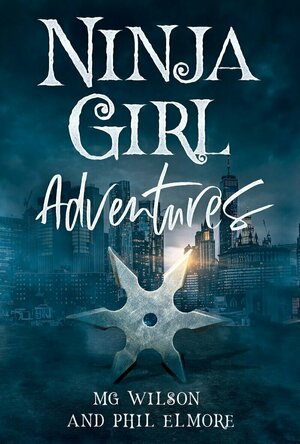
Ninja Girl Adventures (Ninja Girl Adventures #1)
Melissa Wilson and Phil Elmore
Book
Sister Power at It’s Best Moira Mackenzie is just 14 years old. Her sister Mindy is 15, and...
Young Adult Thriller
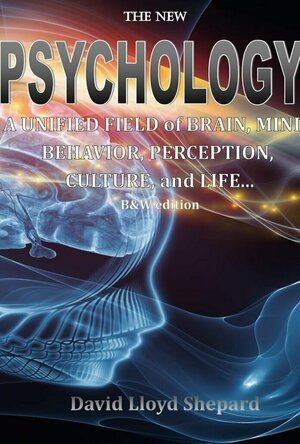
The New PSYCHOLOGY
Book
From the mind of genius to the suicide bombers of today’s news, from science to sex, understanding...
